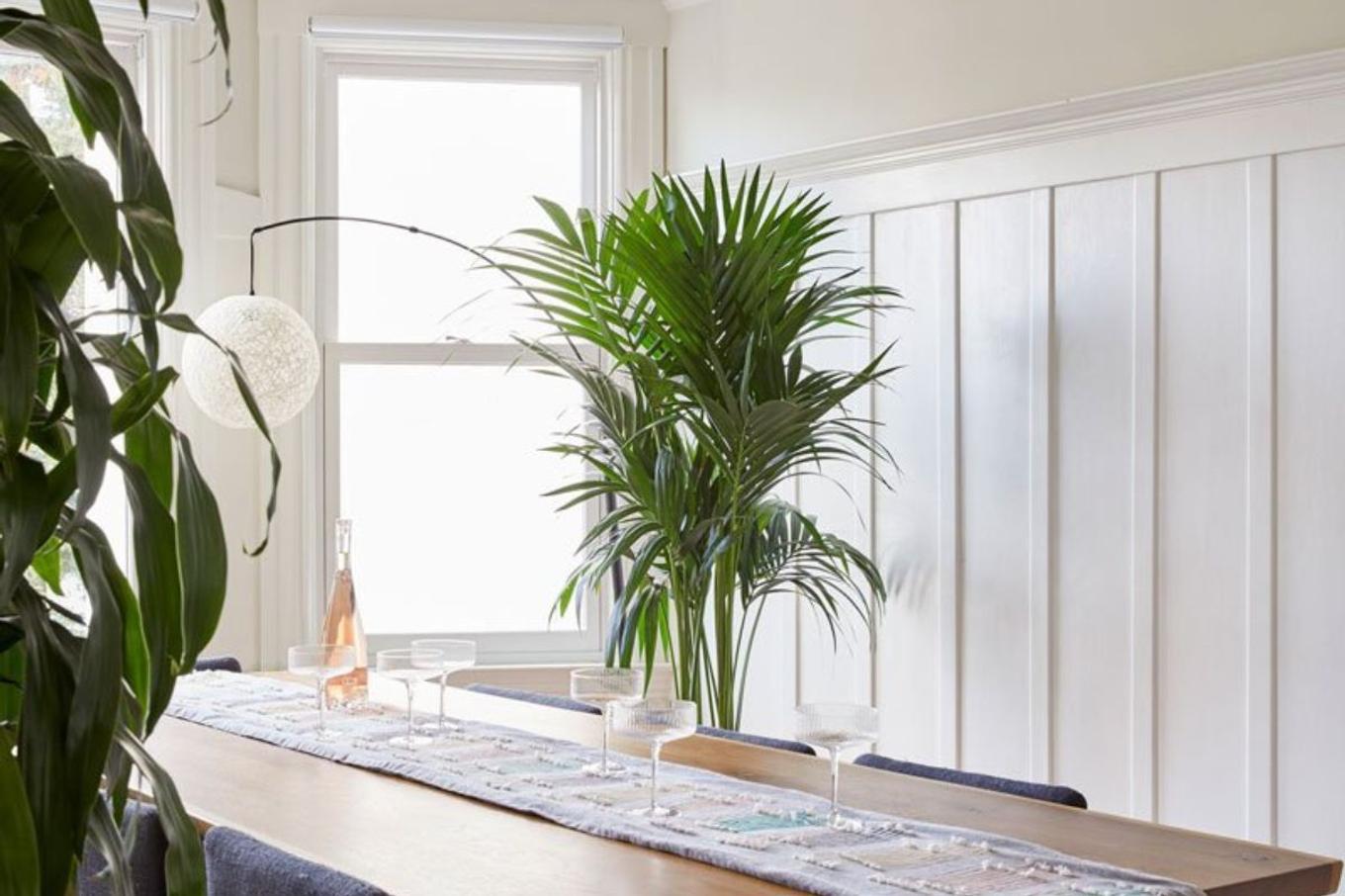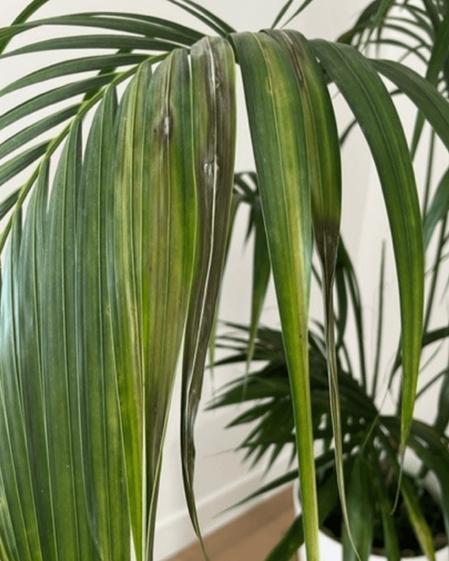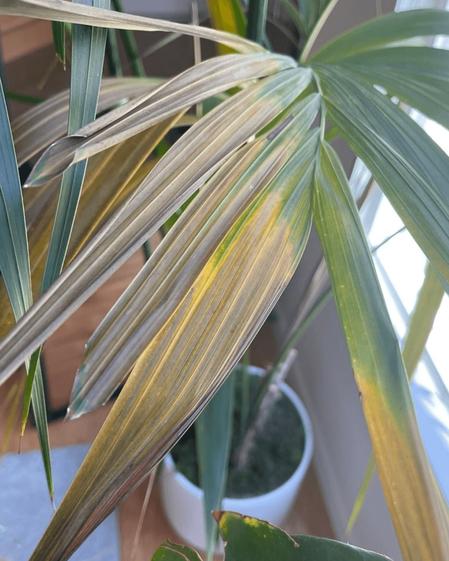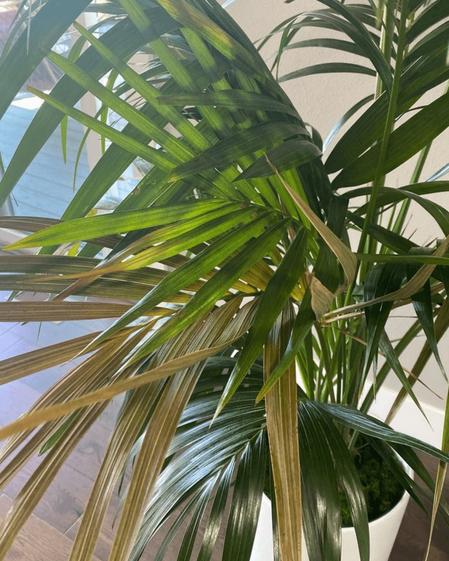{{ this.results.length }} Results
Your search for {{ this.pattern }} didn't return any results.
Kentia Palm Care Guide

Tall, elegant, and full of tropical charm, the Kentia Palm (howea forsteriana) is admired for its graceful, arching fronds and laid-back island feel. This slow-growing favorite not only adds lush greenery to your space but also helps purify the air, all the while generally being a relatively low maintenance statement plant. Keep reading for straightforward care tips to help your palm thrive.
Simple Care Instructions for the Kentia Palm
Light Requirements
The Kentia Palm thrives in medium to bright indirect light but can adapt to lower light conditions. Just be sure to keep it out of direct sun, which can cause its leaves to scorch.
Watering Needs
Keep the soil just slightly moist, watering when the top 1–2 inches feel dry. Be careful not to overwater or let the soil become soggy.
Need help with watering your Kentia Palm? Use a moisture meter to always know the best time to water. Shop our favorite minimalist moisture meter here.
Humidity and Temperature
Kentia Palms appreciate moderate humidity, so if your space is particularly dry, consider using a humidifier or regularly misting.
They thrive in warm, stable environments with temperatures between 65–85°F (18–29°C). Keep your Kentia Palm away from cold drafts, air conditioning vents, or sudden temperature changes. While they can handle cooler temps better than some tropical plants, it’s best to avoid any frost exposure, as freezing conditions can cause lasting damage.
Soil and Fertilizing
Use a well-draining, nutrient-rich soil for your Kentia Palm. A high-quality indoor potting mix is ideal—look for one that includes ingredients like perlite or sand to improve drainage and airflow around the roots. This helps prevent soggy soil, which Kentia Palms are particularly sensitive to.
Support yoru Kentia Plam with a liquid fertilizer, using it twice a month during the growing season in spring or summer. In fall and winter, when growth slows, you can reduce or pause fertilizing.
Common Problems and Troubleshooting Tips
Yellowing Leaves
Symptoms: Leaves begin to turn yellow, often starting from the lower fronds.
Cause: Overwatering, which can lead to poor drainage and potential root rot.
Solution: Allow the soil to dry out thoroughly before watering again. For minor cases, improving aeration may help. If the problem persists, consider repotting the plant in fresh, well-draining soil to prevent root rot. You can also trim off yellow leaves at the base to keep the plant looking tidy.
Brown Leaf Tips
Symptoms: Leaf tips turn yellow or brown, giving the plant a dry or crispy appearance.
Cause: Most commonly underwatering, but can also result from excess fertilizer or low humidity.
Solution: Maintain a consistent watering routine, ensuring the soil doesn’t dry out too much between waterings. Mist the plant regularly to increase humidity, and keep it away from heaters, air vents, or air conditioners that can dry out the air. If over-fertilizing is suspected, flush the soil with water to remove excess salts.
Heavily Drooping Leaves
Symptoms: Fronds appear limp and droop more than usual.
Cause: Could be either overwatering or underwatering.
Solution: Evaluate your recent watering routine. If underwatering is the issue, remove the plant from its decorative pot and give it a deep, thorough soak—either outdoors or in a bathtub—so the roots can absorb water evenly. If overwatering is suspected, refer to the yellowing leaves section above and allow the soil to dry out completely before watering again. Always ensure the pot has proper drainage.

A drooping Kentia Palm is almost always due to a watering issue.

Common yellow/brown leaves on the Kentia Palm, either a water issue or environment is too dry.

Sometimes nothing is wrong with the plant--it's just that frond's time to go!
Seasonal Care Tips
While Kentia Palms enjoy bright, indirect light, they can tolerate lower light conditions during the cooler months, making them well-suited for indoor environments year-round. However, avoid placing them in direct sunlight, especially during the summer, as it can burn the fronds. In winter, you can place your Kentia Palm in a slightly brighter spot, but be mindful not to expose it to harsh sun, as it prefers a more sheltered position.
Additionally, Kentia Palms tend to grow slowly, and they won’t produce flowers indoors, as they typically bloom in their natural habitat. While it’s unlikely to see blossoms in your home, this plant's beauty comes from its lush, elegant fronds. For optimal health, ensure your Kentia Palm is in a stable environment with moderate humidity and consistent care, and it will thrive throughout the seasons.